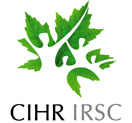Research
We are currently pursuing a variety of bioinformatics and genomics projects. Our own research interests can be summarized in the following areas:Comparative Genomics, Genome Evolution, and microRNAs We are also collaborating with colleagues on large-scale yeast genomics projects, cancer profiling projecast, and sequencing projects.
Comparative genomics and genetic variation
We are interested in using computational and experimental approaches to
identify and characterize functional sequences and motifs in the
intergenic regions of the genome. We are particularly interested in the
primate-specific noncoding RNA transcripts, i.e. those that only arose
after the human-mouse split. The recent deep sequencing experiments have
revealed many of these candidate transcript regions in
the human genome. Using these datasets as starting point, we applied a number of filtering procedures
such as probability of forming stable secondary structures to derive a
set of candidate regions in the human genome. In particularly we are interested in RNAs involved in chromatin remodeling,
aging process, and male reproduction
Genome evolution
We are interested in studying the evolutionary history of genes,
genomes, transcriptomes, microRNAs, and biological networks. Having the advantage
of working closely with colleagues who are producing large amount of
genomics and proteomics data, we hope to be able to elucidate some of
the fundamental questions in evolutionary biology and genomics.
Specifically we are interested in the following questions:
Analysis of TF binding sites
We are developing new algorithms to improve existing TF binding sites
prediction methods. Specifically we are trying to characterize the
structure information and positional co-variations that are hidden in
the traditional Positional Specific Weight Matrix (PSWM) approaches. We
demonstrated that the structural properties of the double-helix as
shown below are important for DNA-protein recognition and likely are
the “hidden code” for the degenerate weight matrices.





